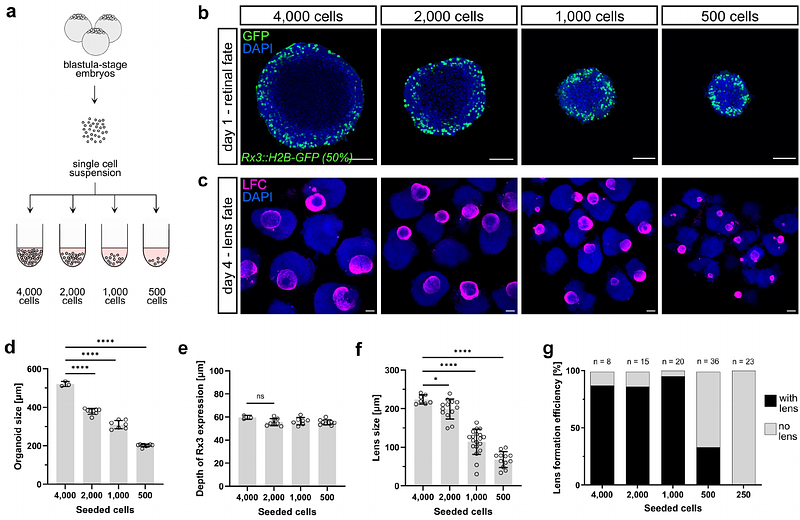Inverted Assembly of the Lens Within Ocular Organoids Reveals Alternate Paths to Ocular Morphogenesis

Inverted Assembly of the Lens Within Ocular Organoids Reveals Alternate Paths to Ocular Morphogenesis
Stahl, E. F.; Delgado-Toscano, M. A.; Saravanan, I.; Paneva, A.; Wittbrodt, J.; Zilova, L.
AbstractThe eye is a complex organ composed of two main structures - the retina and the lens. It forms by the invagination of the lens forming head surface ectoderm embedding into the forming optic cup. This outside-in mode of morphogenesis ensures that the light focusing lens is positioned centrally inside of the eye in the highly constrained environment of the developing embryo. Advances in stem cell biology in the last decade introduced organoids as model to study organogenesis under normal and diseased conditions. However, even though strikingly similar at some points, it remained elusive to which extend the generation of individual structural features in organoids recapitulates in vivo organogenesis. Here we describe the generation of fish ocular organoids composed of both, lens and retina, using pluripotent embryonic cells from medaka (Oryzias latipes). Formation of the organoid lens followed the key molecular features of the process in vivo, including the establishment of lens progenitor cells and their subsequent differentiation into lens fiber cells. In a process dependent on the coordinated activity of BMP and FGF signaling, lens formation in ocular organoids was marked by the expression of key genes implicated in organismal lens development. Despite adhering to the basic molecular machinery of lens formation in vivo, the morphogenesis into a spherical lens followed an inside-out mode. Lens progenitor cells were initially established and differentiated into a spherical lens directly inside of the retina. Subsequent displacement of the lens from the center of the organoid towards its surface ultimately led to the formation of a cup-shaped retina with a centrally positioned lens. Our study highlights that the self-organization of the organoid can favor routes that were not selected for in the developing embryo. Those routes can lead to an alternative, though highly similar outcome with the respect to achieving specific structural features in an unconstrained, embryo-free environment.